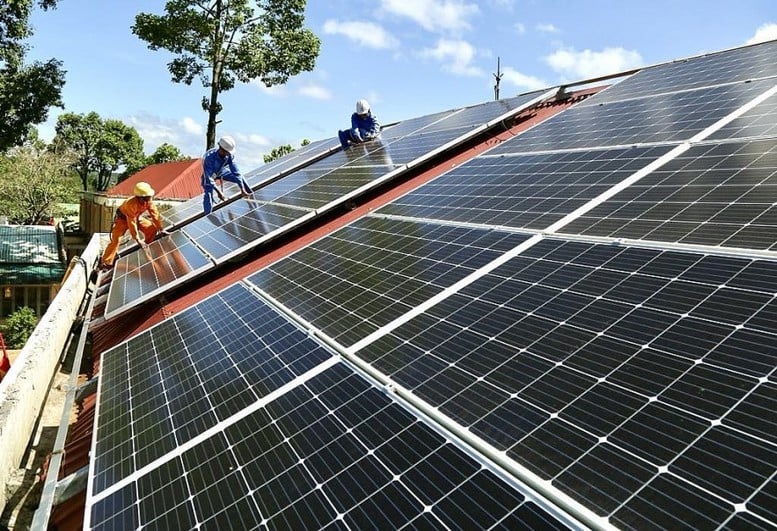
From the actual implementation, rooftop solar power brings many practical benefits. Not only does it help businesses save on electricity costs, this model also contributes to enhancing brand value through the image of a green, environmentally friendly business - Illustrative photo
At the Forum "Promoting green energy in industrial zones: Solutions for businesses to effectively implement" organized by VCCI on the afternoon of May 15, Mr. Nguyen Ngoc Trung, Deputy Director of the Department of Industry Economics , Central Policy and Strategy Committee, emphasized the important role of rooftop solar power in industrial zones. He said that this is a feasible model, in line with the energy transition orientation and needs to be promoted by synchronous policy solutions.
Vietnam currently has more than 380 industrial parks and about 700 industrial clusters in operation - "hot spots" for electricity consumption. According to Mr. Trung, the technical potential of rooftop solar power in industrial parks alone can reach 12 to 20 GWP - equivalent to the capacity of more than 10 coal-fired thermal power plants. Without needing to expand land funds or build new infrastructure, businesses can completely take advantage of existing factory roofs to install solar power systems, a solution suitable for the distributed energy model that the Government is encouraging.
From the actual implementation, rooftop solar power brings many practical benefits. Not only does it help businesses save on electricity costs, this model also contributes to enhancing brand value through the image of a green, environmentally friendly business. In particular, self-production and consumption of electricity on-site helps reduce the load on the national power system, especially during peak hours - an increasingly urgent issue in the context of sharply increasing load.
Furthermore, rooftop solar power also contributes positively to the goal of reducing greenhouse gas emissions, in line with Vietnam's commitment at COP26, as well as creating a foundation for the reconciliation between rapid economic growth and sustainable development.
The policy framework is gradually being perfected.
According to Mr. Nguyen Ngoc Trung, in recent times, Vietnam has issued many important policies shaping the direction of sustainable energy development. In particular, Resolution 55/2020 of the Politburo , National Energy Development Strategy to 2045 (issued in March 2024), along with Power Plan VIII and adjustments expected to be updated in 2025 are notable milestones, clearly demonstrating the determination to transform the energy system towards modernity, greenness and cleanliness.
In particular, the latest revised Power Plan VIII sets a target that by 2030, 50% of households and office buildings will have self-sufficient rooftop solar power systems. At the same time, the proportion of renewable energy in the total power system capacity is expected to reach 25-30% by 2030 and increase to 74-75% by 2050 – an ambitious but feasible target with the support of both the public and private sectors.
Notably, two new decrees, Decree 57/2025/ND-CP and Decree 58/2025/ND-CP, are creating strong momentum for solar power development. Decree 57 opens up a direct power purchase agreement (DPPA) mechanism between renewable energy producers and large customers; meanwhile, Decree 58 brings clear investment incentives such as land rent exemption, electricity storage support and technology transfer promotion.
The "knots" that need to be untied
Despite the great potential and the expanding policy corridor, Mr. Trung also frankly pointed out a number of barriers that have slowed down the deployment of rooftop solar power in industrial parks. First, the legal corridor is not really synchronized, leading to difficulties in connection and operation procedures. Initial investment costs are still a big barrier, especially for small and medium enterprises, which account for a high proportion in industrial parks.
In addition, technical infrastructure in many industrial parks has not met the requirements of distributed electricity; two-way metering equipment is still lacking, while awareness and skills of many businesses on renewable energy are still limited.
To address these shortcomings, Mr. Trung proposed that it is necessary to soon issue detailed instructions for new decrees, especially for the self-production - self-consumption model in industrial parks. At the same time, there should be specific financial support policies such as tax exemptions, green credits, and rapid depreciation of investment assets. The ESCO model - a third party investing in the system and leasing back electricity - is also a solution that needs to be strongly promoted.
Regarding infrastructure, Mr. Trung called on industrial park investors to coordinate with the electricity sector to upgrade the grid, deploy smart metering devices and create conditions for solar power systems to connect to the grid or operate independently. In addition, training technicians and improving the capacity to operate renewable energy systems also need to be invested in systematically. Finally, he emphasized the importance of public-private and international cooperation to mobilize ODA capital, preferential loans and private investment capital to implement projects on a large scale and sustainably.
Practical observations in large electricity-consuming industries show that the need to switch to green electricity is increasingly evident.
Mr. Truong Van Cam, Vice President and General Secretary of the Vietnam Textile and Apparel Association, affirmed that the textile and garment industry consumes a lot of electricity, so the transition to renewable energy is extremely necessary. He said that many businesses in the industry expressed their desire for capital support, because 93% of businesses are small and medium-sized. He also proposed that the State consider tax incentives for green projects, while enhancing human resource training to deploy an effective renewable energy system.
Another issue pointed out by Mr. Cam is that there needs to be a mechanism for businesses in the industrial park to store electricity during peak hours and resell it when there is a shortage, which will help stabilize the supply and optimize energy use.
From the perspective of the seafood industry, Mr. Nguyen Hoai Nam, General Secretary of the Vietnam Association of Seafood Exporters and Producers (VASEP), said that the cost of electricity for freezing systems is very high, making the need to use rooftop solar power a top priority. In fact, many businesses have invested in the system and demonstrated clear efficiency through reduced operating costs. Moreover, the use of green energy is also a big "plus" in negotiations with international brands, which increasingly place emphasis on sustainable development criteria in the supply chain.
As an equipment manufacturer, Mr. Vu Huy Dong, Chairman of the Board of Directors and General Director of Damsan Joint Stock Company, said that his company is participating in the entire solar panel production chain from design, installation to operation of rooftop systems in industrial parks. However, he also reflected that access to capital is still a major obstacle. Medium-term loan interest rates at 7.5-8% and the cautious mentality of banks make it difficult for investors to boldly expand their scale.
Anh Tho
Source: https://baochinhphu.vn/nang-luong-xanh-cho-khu-cong-nghiep-co-hoi-lon-thach-thuc-khong-nho-102250515170148446.htm




![[Photo] 60th Anniversary of the Founding of the Vietnam Association of Photographic Artists](/_next/image?url=https%3A%2F%2Fvphoto.vietnam.vn%2Fthumb%2F1200x675%2Fvietnam%2Fresource%2FIMAGE%2F2025%2F12%2F05%2F1764935864512_a1-bnd-0841-9740-jpg.webp&w=3840&q=75)

![[Photo] National Assembly Chairman Tran Thanh Man attends the VinFuture 2025 Award Ceremony](/_next/image?url=https%3A%2F%2Fvphoto.vietnam.vn%2Fthumb%2F1200x675%2Fvietnam%2Fresource%2FIMAGE%2F2025%2F12%2F05%2F1764951162416_2628509768338816493-6995-jpg.webp&w=3840&q=75)

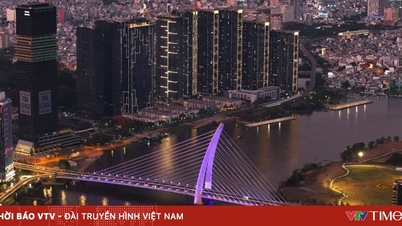

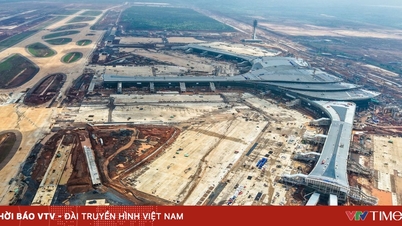
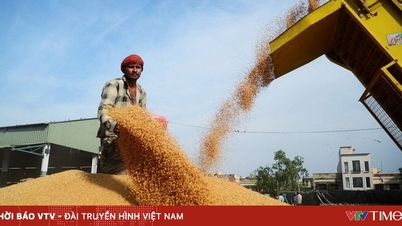

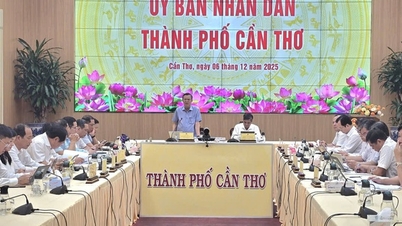
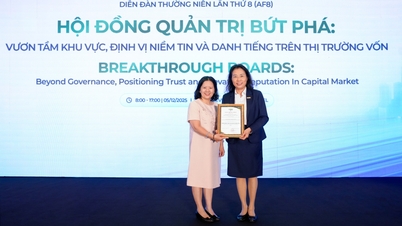






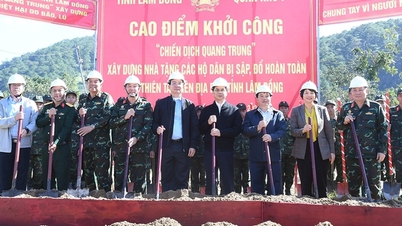
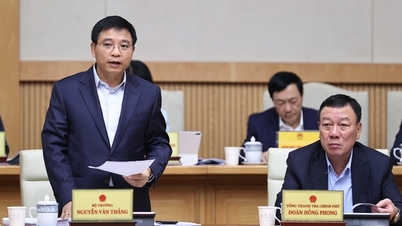

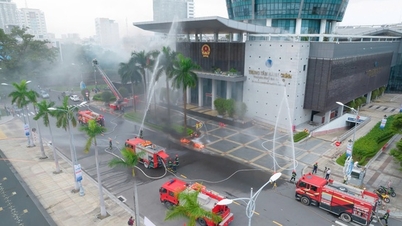


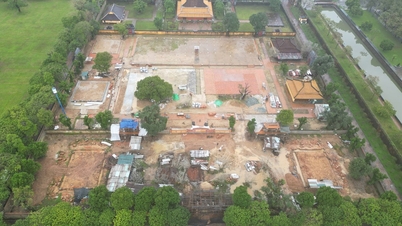








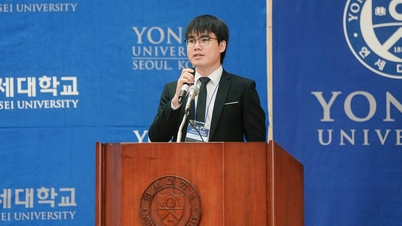








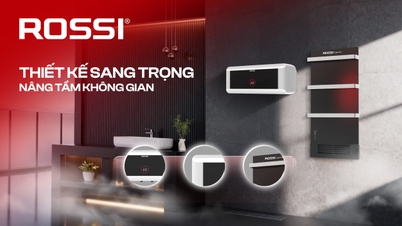


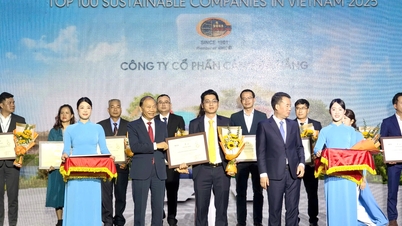
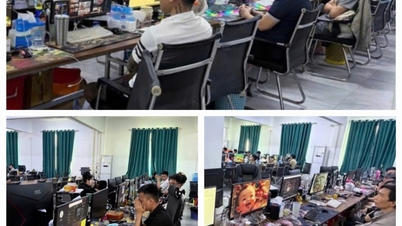
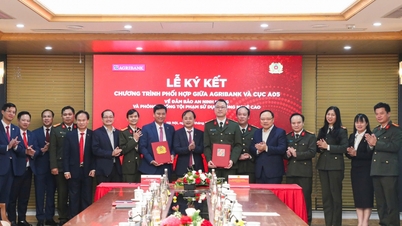
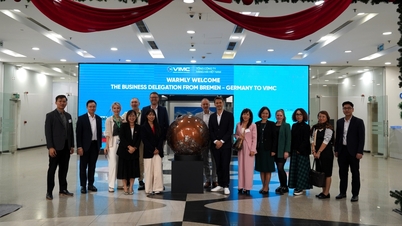






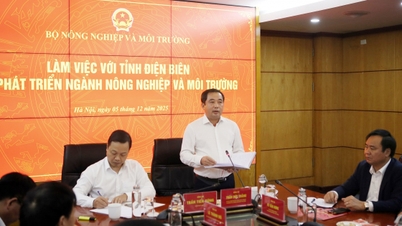







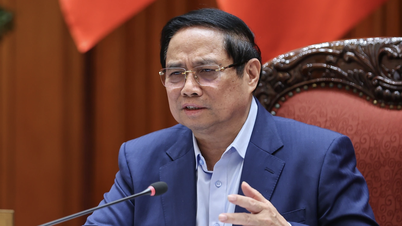




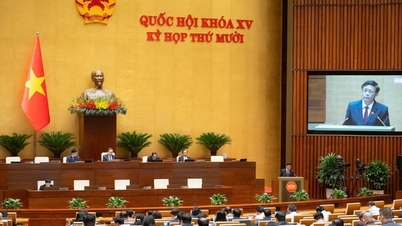

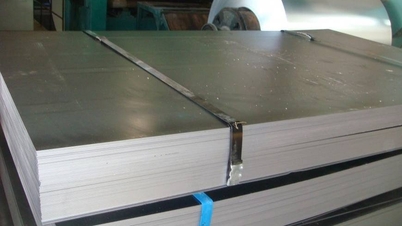

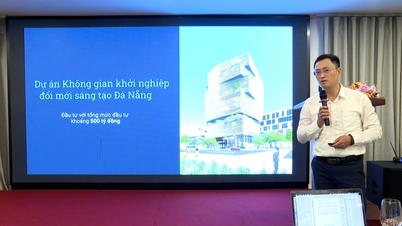

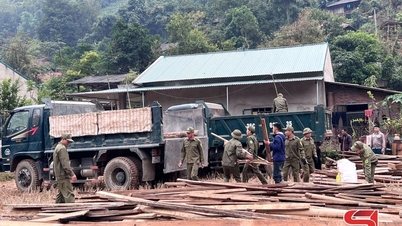

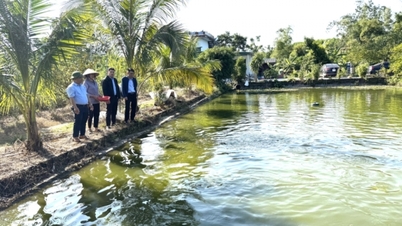

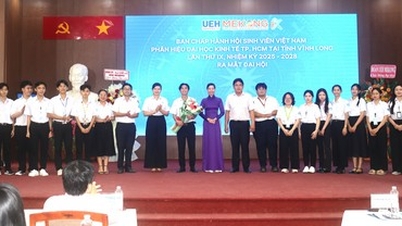


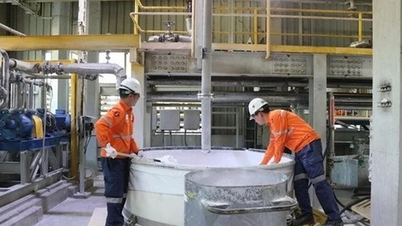


















Comment (0)